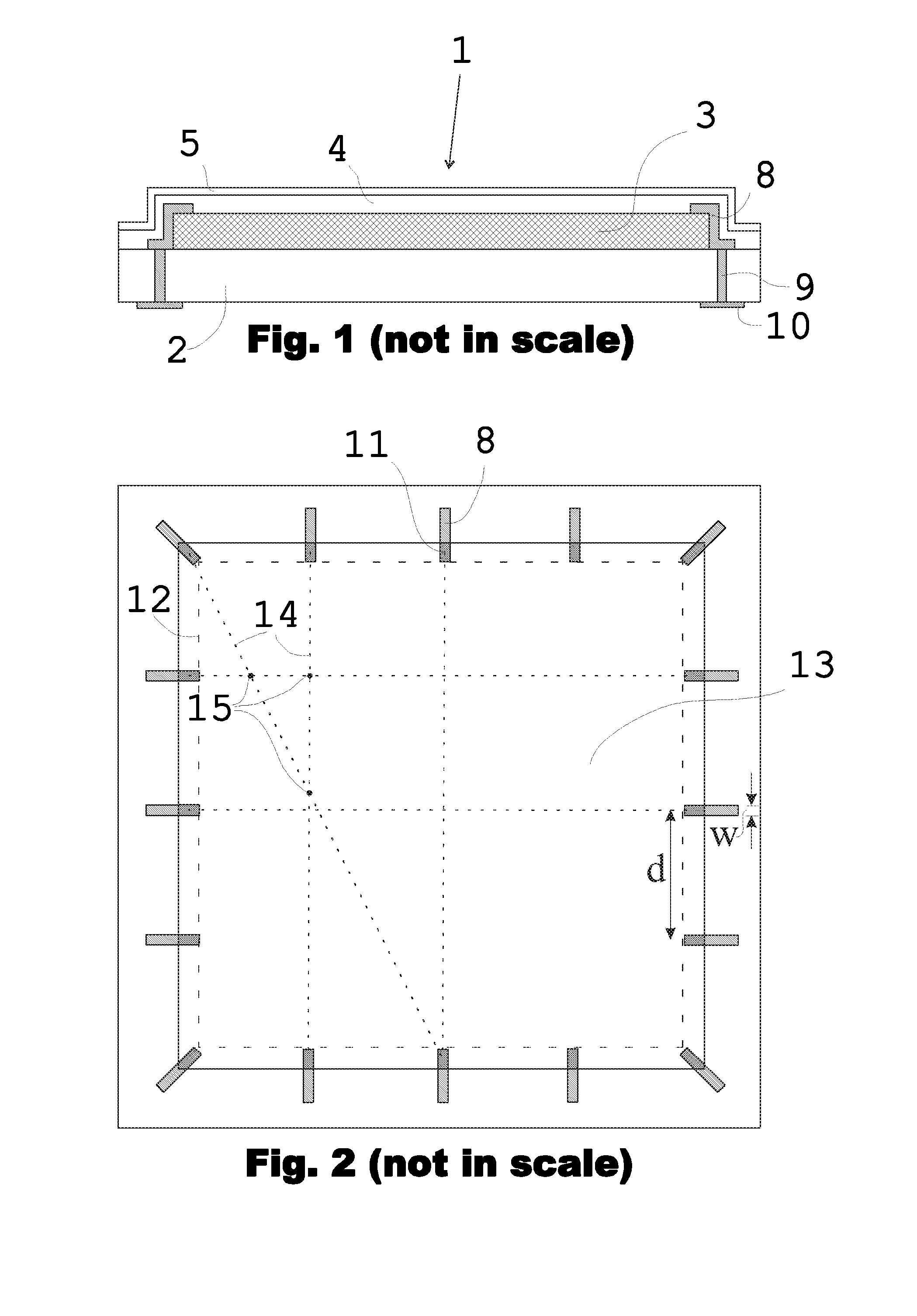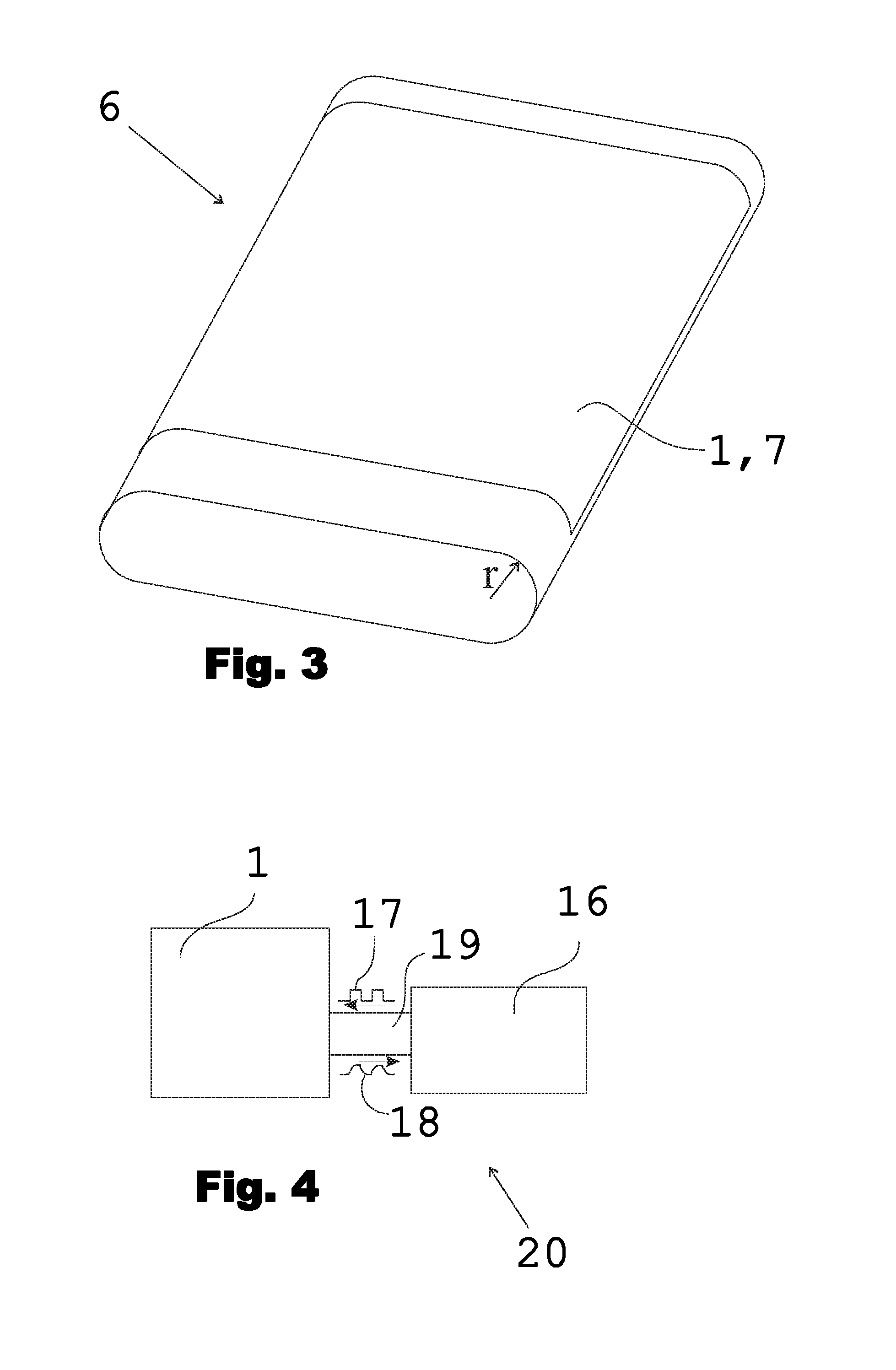Touch sensitive film and a touch sensing device
- Summary
- Abstract
- Description
- Claims
- Application Information
AI Technical Summary
Benefits of technology
Problems solved by technology
Method used
Image
Examples
Embodiment Construction
[0066]The touch sensitive film 1 shown in FIG. 1 comprises a substrate 2 and a conductive layer 3, the latter being formed of networks of HARM (High Aspect Ratio Molecule) structures, e.g. carbon nanotubes and / or carbon NANOBUDs. The substrate can be made of, for example, polyethylene terephthalate PET. In addition to the HARMS networks, the conductive layer can also comprise suitable species chemically bonded to, physically absorbed on, or otherwise combined with the layer as a dopant to adjust the sheet resistance of the layer. The sheet resistance of the conductive layer 3 is above 3 kΩ and preferably in the range of 3 to 40 kΩ, e.g. 25 kΩ. As described earlier in this document, these kinds of resistance range and composition of the conductive layer allow a superior touch detection performance of a touch sensing device utilizing such a touch sensitive film. The conductive layer of FIG. 1 can have a thickness of e.g. 5 nm.
[0067]The touch sensitive film shown in FIG. 1 and explaine...
PUM
 Login to View More
Login to View More Abstract
Description
Claims
Application Information
 Login to View More
Login to View More - R&D
- Intellectual Property
- Life Sciences
- Materials
- Tech Scout
- Unparalleled Data Quality
- Higher Quality Content
- 60% Fewer Hallucinations
Browse by: Latest US Patents, China's latest patents, Technical Efficacy Thesaurus, Application Domain, Technology Topic, Popular Technical Reports.
© 2025 PatSnap. All rights reserved.Legal|Privacy policy|Modern Slavery Act Transparency Statement|Sitemap|About US| Contact US: help@patsnap.com



